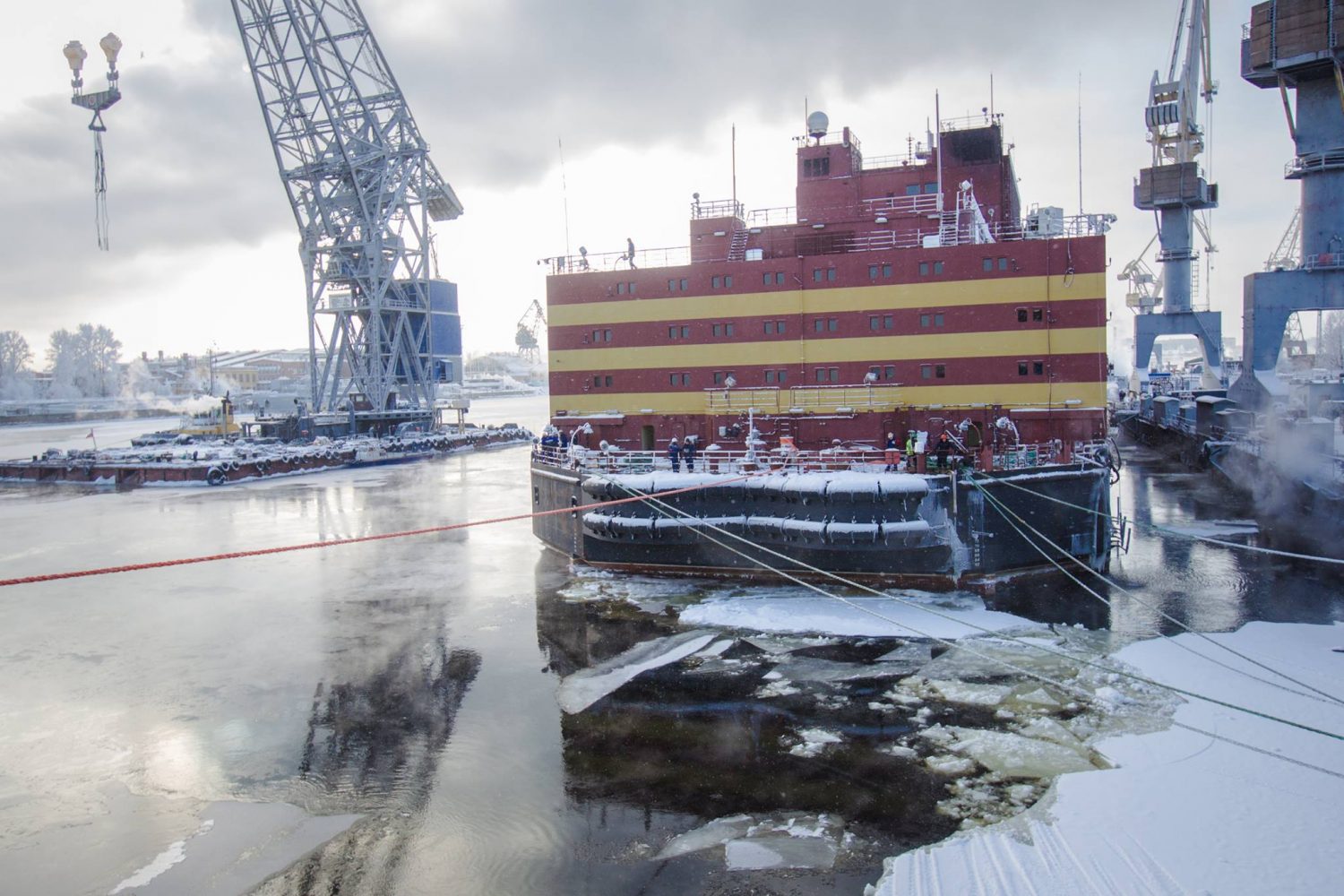
FPU Generated First Electricity
back to contentsThe reactor on the starboard side of the FPU now anchored in Murmansk reached 10% of its rated power capacity. It means that one of the reactors generated its first electricity.
This is an initial, but very important step in the comprehensive equipment testing process to check the unit’s functionality. “The testing process is divided into several stages. First, tests are carried out at the maximum of 10% of the reactor’s rated output, followed by gradual power ascension to 110% of the output for final tests,” said Pavel Ipatov, Director for Special Projects and Initiatives at Rosenergoatom (Rosatom’s power generation division). Reactor equipment, automatic controls, safety systems and other hardware to enable safe power ascension to the next level are all tested at every stage.
Before the reactor unit switched to the power generating mode, all necessary preparations were made to ensure safe and reliable operation. The staff was properly instructed, operation manuals written, fuel supplied, fire safety, radiation monitoring, control, protection and ventilation systems checked, and radioactive waste storage facilities prepared.
In the near future, both reactors of the FPU will be tested at full capacity to verify their performance parameters and ability to operate for the entire service life. Auxiliary systems of the facility will also be checked for compliance with specifications.
The comprehensive testing process at the FPU began on November 25 and will last until the spring of 2019. Its primary goal is to make sure Akademic Lomonosov unit is ready for commercial operation.
The FPU is an unparalleled low-power movable nuclear facility built by Rosatom. It is designed to operate in Russia’s Far North and Far East, supplying power to large industrial sites, ports and cities. In the autumn of 2019, the floating power unit will be towed to the port of Pevek (Chukotka Peninsula) to operate as part of a floating nuclear power plant (FNPP) that will replace the retiring capacity of the onshore Bilibino nuclear power plant and Chaun thermal power plant.
The FNPP is designed to withstand extreme impacts, such as a tsunami or other natural disasters. The station is equipped with two KLT-40S nuclear reactors that can generate up to 70 MW of power and 50 Gcal/h of heat in standard working conditions, which is enough to meet the needs of a city with the population of 100,000. Floating power units are also suitable for island countries since they can function as desalination plants.
At present, Rosatom is working to create the second generation of floating power plants that will be smaller than the current version. They will be equipped with two RITM-200M reactors with a capacity of 50 MW each.




